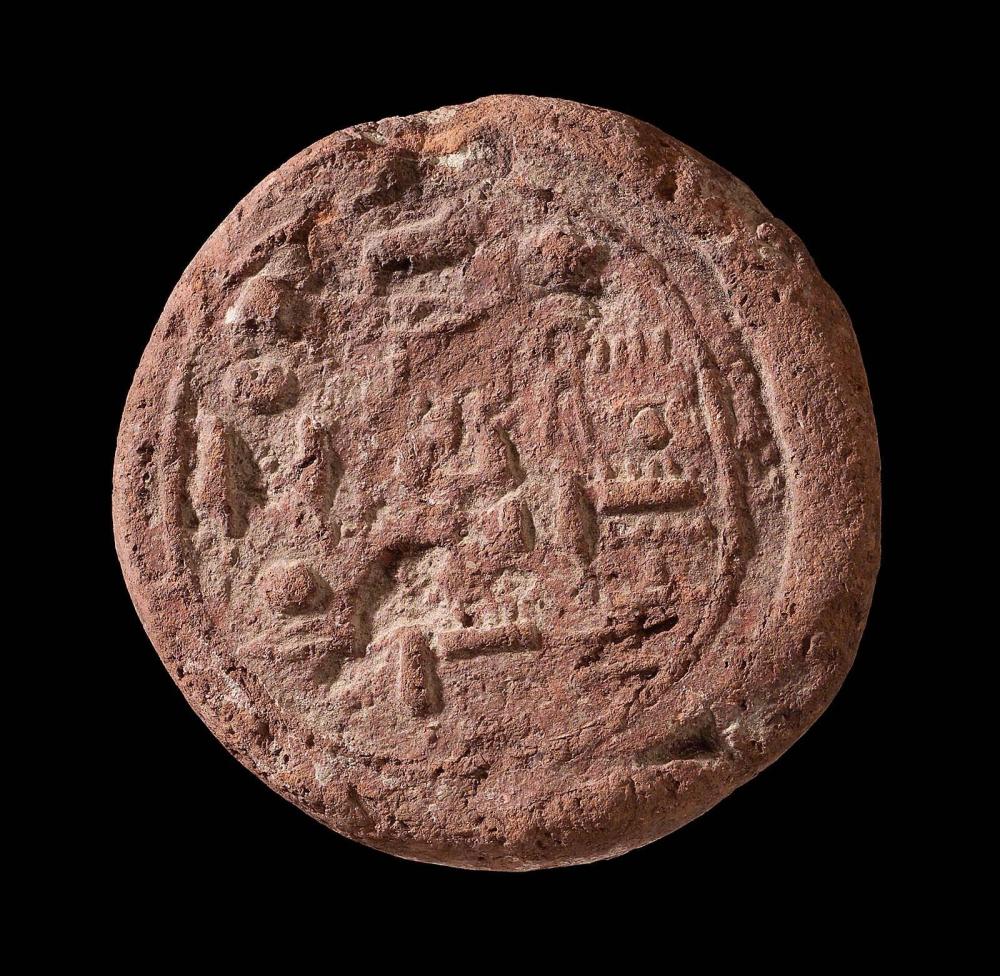Advanced Search 

Funerary cone of Amenhotep
Egyptian
New Kingdom, Dynasty 18–20
1550–1070 B.C.
Object Place: Egypt, Possibly from Thebes (Dra Abu el-Naga)
Medium/Technique
Pottery
Dimensions
Height x diameter: 5.7 x 7.3 cm (2 1/4 x 2 7/8 in.)
Credit Line
Hay Collection—Gift of C. Granville Way
Accession Number72.1813
NOT ON VIEW
CollectionsAncient Egypt, Nubia and the Near East
ClassificationsArchitectural elements
Catalogue Raisonné
Davies & MacAdam 151
DescriptionFunerary cone of reddish clay, majority of tapering cone element sawed off and missing. Head stamped with circular impression of hieroglyphic text in undivided field identifying owner as "One honored by Osiris. Acolyte of Amen of the 4th Phyle Amenhotep, True-of-Voice" (imAxy xr Wsir imi-st-a n Imn hr sa 4-nw Imn-Htp MAa xrw).
Funerary cones were components of a frieze, inserted above the doors of private tombs, particularly in the Theban region. They have been variously interpreted as: name-plates of sorts to identify the tomb owner, decorative memorials, boundary markers for a tomb, dummy bread loaves or meat offerings, symbolic roof beams, or (for the visible circular head) depictions of the sun disk.
For other examples of this tomb owner see: Res.72.325; Res.72.326; Res.72.327; RES.72.328; Res.72.329; Res.72.330; 72.1812.
Davies and Macadam, A Corpus of Inscribed Egyptian Funerary Cones (1957), type #151.
Funerary cones were components of a frieze, inserted above the doors of private tombs, particularly in the Theban region. They have been variously interpreted as: name-plates of sorts to identify the tomb owner, decorative memorials, boundary markers for a tomb, dummy bread loaves or meat offerings, symbolic roof beams, or (for the visible circular head) depictions of the sun disk.
For other examples of this tomb owner see: Res.72.325; Res.72.326; Res.72.327; RES.72.328; Res.72.329; Res.72.330; 72.1812.
Davies and Macadam, A Corpus of Inscribed Egyptian Funerary Cones (1957), type #151.
ProvenanceProbably from Thebes (Dra Abu el-Naga). By 1836: Robert Hay Collection, Linplum, Scotland; 1863: to his son, Robert James Alexander Hay; 1868-1872: Way Collection, Boston (purchased by Samuel A. Way through London dealers Rollin and Feuardent, 27 Haymarket); 1872: given to the MFA by Samuel's son, C. Granville Way.
(Accession Date: June 28, 1872)
(Accession Date: June 28, 1872)
